Concept Map Vs. Mind Map: What Are the Differences?
It’s without a doubt that mind mapping tools such as concept maps and mind maps are professional ways to brainstorm and organize ideas in a firm. Both help you break down complex ideas or thoughts into chunks for quick processing. While concept maps and mind maps allow you to hit your target goal, they both have some unique features that distinguish them.
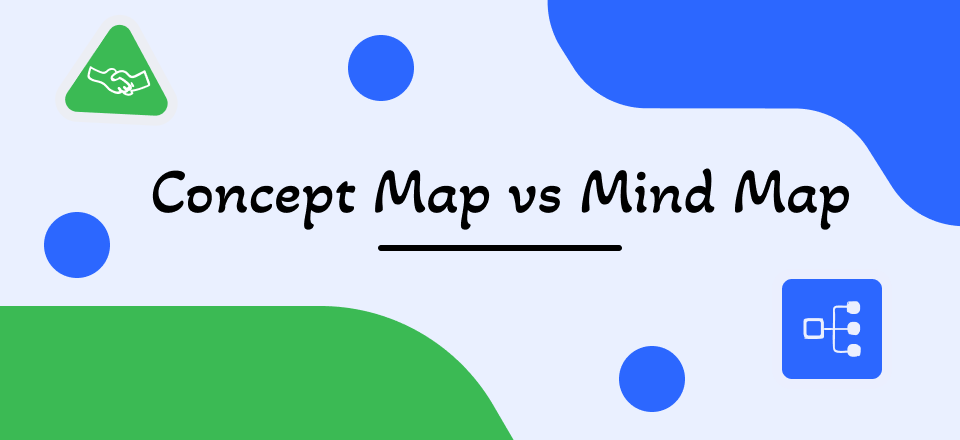
Concept Map Vs. Mind Map
Choosing between concept maps and mind maps is never a walk in the park. But now that you are here, we will guide you to make the best decision. So continue reading Concept Map Vs. Mind Map.
Also Read: Workflowy vs. Notion
Table of Contents: hide
Difference Between Concept Map and Mind Map
What Is a Concept Map?
Concept map is simply a visual illustration of the relationship between concepts and actions (ideas or thoughts). It lets you show the sequential approach from breaking complex ideas to analyzing them to mapping out your next strategy up to drawing conclusions. It’s a popular approach that finds application in various sectors. From design to engineering to technical writing and managing other professional tasks.
Many businesses find concept maps handy because of the simplicity it brings to work. It helps you analyze problems critically such that you can make headway with minimum stress, as it allows you to divide complex ideas into manageable ones that you and your teammates can understand, digest, and complete without delay.
Concept maps are represented in various forms or models such as flowchart mapping, hierarchy mapping, etc. Each one of the mapping models has a unique feature. For instance, hierarchy mapping lets you show information in order of priority. Flowchart mapping, on the other hand, describes a process or workflow.
Features of Concept Map
- Concept map helps you find, develop, and track the right solutions to fix complex issues.
- It’s made up of different mapping models such as flowchart mapping, web mapping, system mapping, and several others.
- This map provides you with multiple concepts or ways to reach your target goals.
- With concept maps, you can quickly dissect or translate complex ideas conveniently at a zero-cost fee.
Concept Map Pros
- It’s similar to tacit knowledge- thusit requires critical thinking before mapping out strategy.
- Combines multiple techniques or concepts to explain a complex task.
- Concept maps help you to identify bottleneck tasks so you can complete them as quickly as possible without stress.
Concept Map Cons
- It’s crucial all facts and information are checked before sharing them with team members.
- A change in any of the concepts can alter the whole process rendering everything you’ve created unuseful.
- Users must organize information in Ann easy-to-read format that everyone on board can understand.
What Is a Mind Map?
A diagram that helps you capture an idea, break it down into subtasks, and arrange them in the order of priority is called a mind map. It lets you show the relationship between these subtasks and how important they are to each other.
Mind maps are one-sided with a central focus on which other information (also known as subtasks or subtopics) is developed from. It’s hierarchical in nature as it outlines information or subtasks accordingly. Each of the subtasks is independent, unlike the concept map where every concept is dependent on the previous component.
Features of Mind Map
- Perfect for architects and engineers as there are several diagrams and flowcharts you can use to organize your thoughts.
- Encourages real-time communication between you and your teammates.
- With mind maps, you can easily brainstorm ideas qualitatively and quantitatively with minimum stress.
- Shows the process involved in completing a task.
Mind Map Pros
- It’s a perfect option for business environment, academic and personal use.
- Mind map is highly flexible as you are allowed to make alterations without distorting the whole process.
- Allows you to create ideas, and organize them into simpler forms that you and your teammates can understand.
- It optimizes communication among teammates.
Mind Map Cons
- Requires a central idea from which you create information.
- Mind map can be quite difficult to manage as there is too much information to follow.
- It doesn’t provide users with a practical approach to completing tasks. Rather you have the theoretical framework.
Difference Between Concept Map and Mind Map
Merely looking at the definition of mind map and concept map, you wouldn’t find so much difference between them. A Mind Map is a diagram showing what makes up an idea. However, a Concept Map is a diagram that shows the relationship between concepts.
The chart below shows the differences between a Concept Map and Mind Map.
| Concept Map | Mind Map | |
| Nature | Concept map is more complex as it requires you to be logical in your approach. | Mind map is flexible as the central idea is usually simple to dissect and organize. |
| Visual Structure |
|
|
| Approach and Usage | Concept maps let you show the different approaches required to complete a complex idea. | Mind map describes a single process to complete a project or complex idea. |
When to Use Concept Map or Mind Map
Concept map and mind map are both helpful, and can’t be overlooked in any organization. Both mapping systems play a crucial role in the development of a firm as they give everyone the opportunity to contribute to the project.
On the basis of which of which to select, we strongly advise that you check the complexity of the project first before making a decision. When the project seems complicated and could be solved using multiple approaches, a concept map is highly recommended. A simple example to back this up is a problem solving scenario.
You should use a mind map when you have a central idea you want to build on. For instance, if you have a knowledge base you want to develop, you should use a mind map to strategize and show how you want the project to flow from brainstorming to completion.
4 Main Types of Concept Maps
Here, we list the main types of concept maps.
System Map
Need to identify the mutual relationships between two components? System Map is a great tool to use. It helps you find out the principal cause of a problem and how to resolve it.
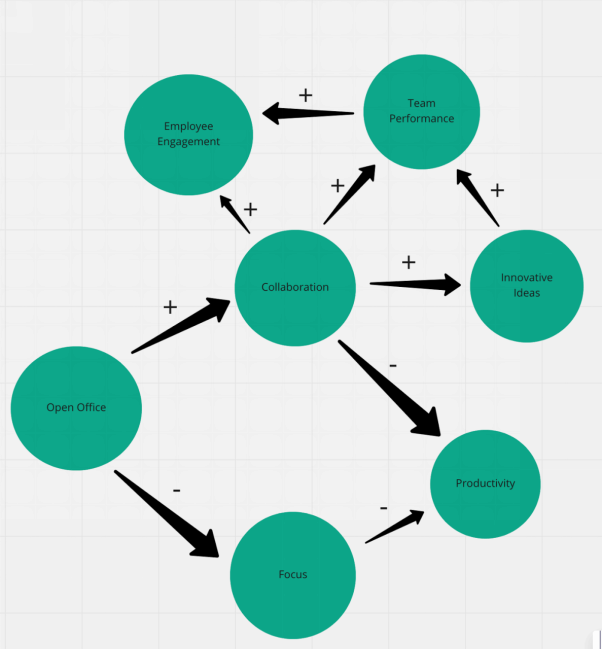
System Map
Flowchart
Flowchart provides you with an easy way to tackle a complex task. It lets you arrange the solutions to a problem in sequential order. You have different shapes to represent each step or approach.

Flowchart
Hierarchical Map
With hierarchical map you can bring orderliness to your team with minimum stress. This mapping system lets you organize your thoughts accordingly by assigning rank or position.
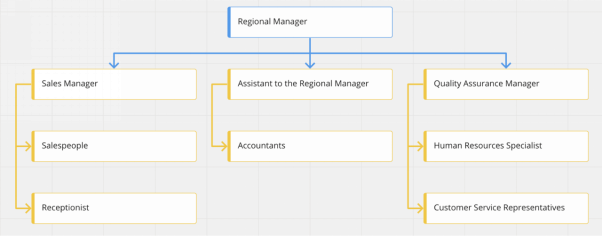
Hierarchical Map
Web Map
Web Map is designed to help you share information across the internet. It’s mostly used in geographic information systems to gather data reports.
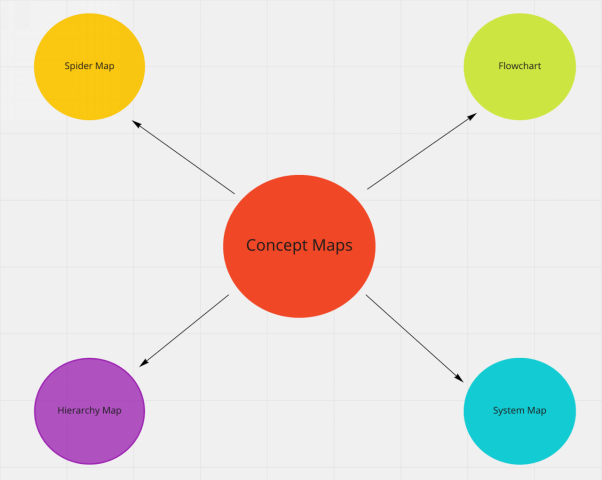
Web Map
8 Main Types of Mind Maps
Here are the 8 main types of mind maps.
1. Spider Map
This is a visual brainstorming technique showing the main idea at the center with the subtopics or subtasks branching out to form the shape of a spider. Here is a visual representation of the statement:
Spider map helps you simplify a complex task by breaking it down into chunks and representing each with a color tag to differentiate them. There is no limit to the number of chunks you can draw out from the central idea. You can map out as many subtasks as possible so far you have the shape of a spider.
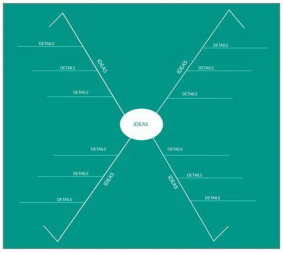
Spider Map
2. Flow Chart
Flow Chart is a popular method for organizing ideas. It’s a unique way of arranging your thoughts accordingly to avoid confusion and hasten completion. It’s mostly used to depict how results are reached.
3. Multi-Flow Map
Looking for a simple way to identify the cause of an event and the consequences? Multi-Flow Map is what you need. This type of mind map shows the main event at the center with cause and effect occupying the left and right hand side respectively.
To understand this statement better, here is a simple diagram:
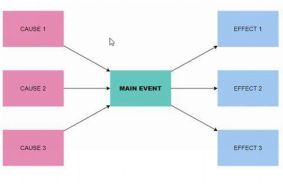
Multi-Flow Map
4. System Map
Here is a complex mapping system that shows the different parts of a concept and how they are related to the central idea. System Map is mostly used in big organizations to track how their workers are progressing with specific tasks.
5. Brace Map
Brace Map gives a simple way to analyze a complex idea or task. It shows the relationship between the main idea and its other sections. It’s often used to give a detailed explanation. Drawing a Brace Map is simple. Just write out the main idea on the left and draw a brace to match the different parts.
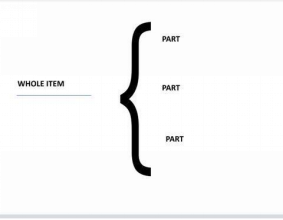
Brace Map
6. Circle Map
Circle Map is often used in description. It shows the main idea at the center of a big circle with the elements (subtasks) existing in parallel line with it.
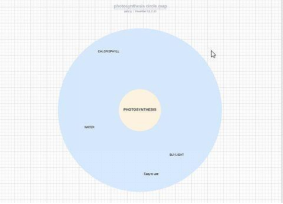
Circle Map
7. Proportional Map
Also known as bubble map is a simple diagram showing how an idea is associated with other topics. It’s often used in descriptive processes. The principal idea is placed at the center with the themes surrounding it.
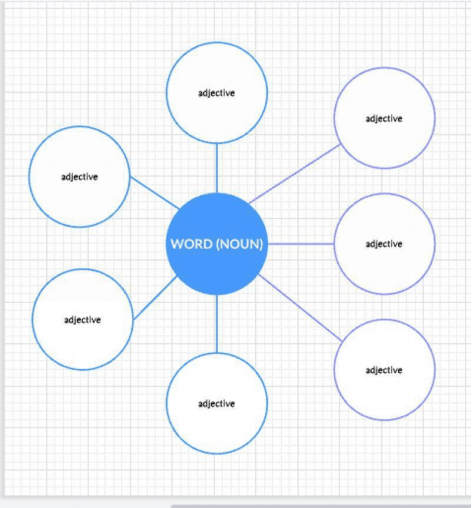
Proportional Map
8. Dialogue Map
A dialogue map is a problem-solving map that lets you break down complex issues into simpler parts so you have multiple approaches to fixing it. It provides you with many ways to solve an issue.
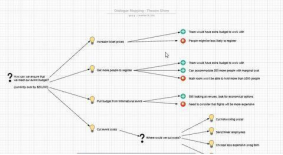
Dialogue Map
Final Words
Both mapping systems, concept map Vs mind map, are similar and are often used interchangeably. However, there are some distinctive features that differentiate them from each other. Mind map focuses on an idea. Concept map, on the other hand, focuses on multiple ideas.
On the basis of visual structure, the mind map is linear while the concept map is non linear. Mind maps are easy to alter, however, concept maps aren’t. An alternation in concept often costs a lot as you might have to start the process all over.
In addition to the differences, we also looked at when to use concept map Vs. mind map. Follow our approach and start making progress in your team. Got some suggestions you would like to share with us? Use the comment section below to air your thoughts.



